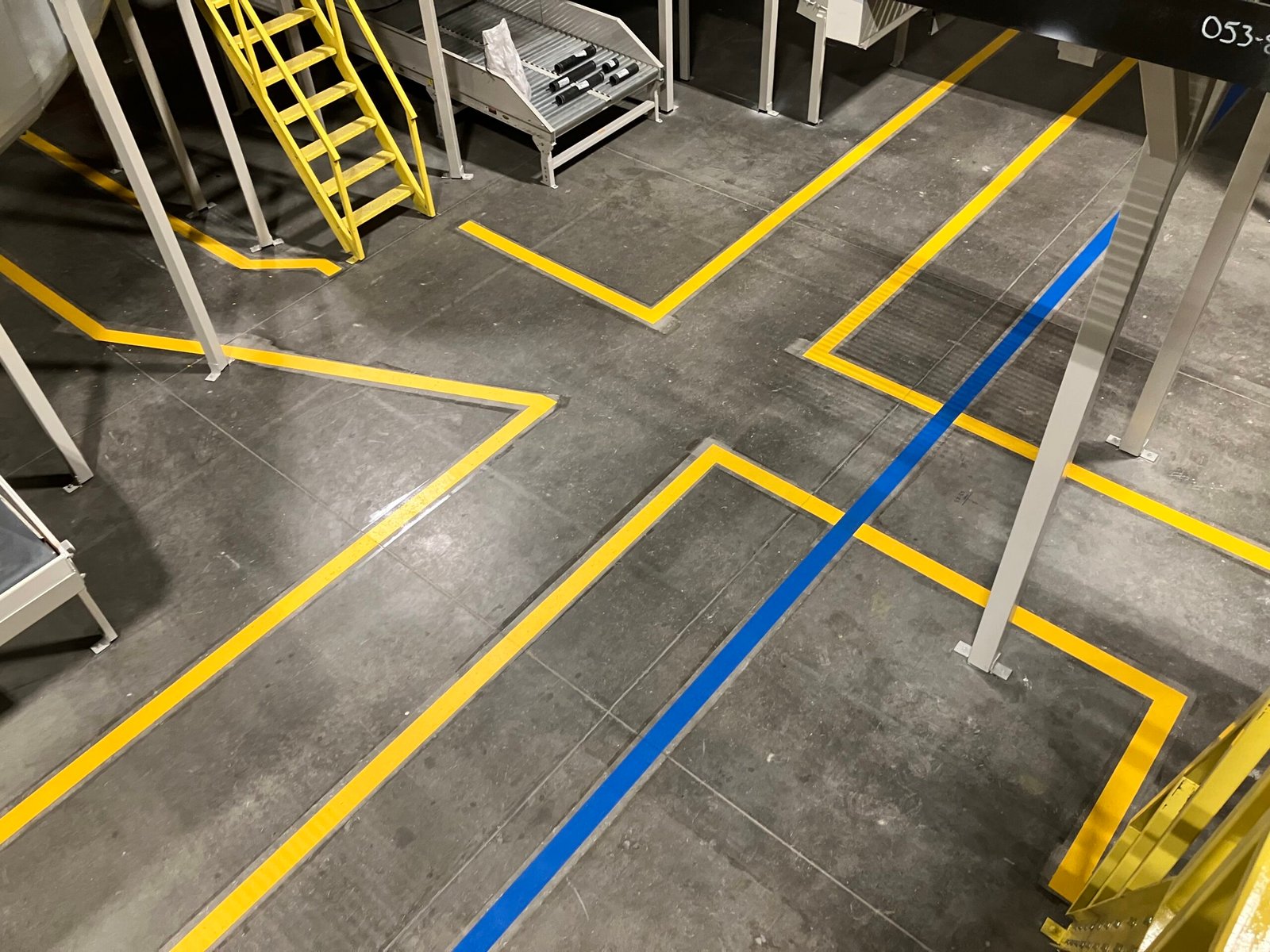In today’s fast-paced industrial environments, floor striping is more than just lines on the ground – it’s a foundational tool for improving safety, efficiency, and compliance in your facility. Whether you manage a warehouse, distribution center, or manufacturing plant, understanding the ins and outs of professional floor marking can have a measurable impact on productivity and workplace safety.
What is Floor Striping?
Floor striping is the process of applying painted or taped lines on facility floors to organize space, direct traffic, and highlight hazards. These visual cues create a more navigable and safer environment for employees, forklifts, and equipment. When executed properly, floor striping becomes a key element of any 5S or Lean Manufacturing system.
Why Floor Striping Matters for Facility Managers
Facility managers are tasked with maintaining smooth operations while upholding strict safety standards. Implementing a strategic floor striping system helps achieve these goals in several ways:
- Enhanced Safety: Marked pathways, hazard zones, and emergency exits reduce the risk of accidents.
- Operational Efficiency: Defined work zones and traffic lanes reduce confusion and downtime.
- Regulatory Compliance: OSHA and ANSI standards often require specific visual communication protocols.
- Professional Appearance: Clean, organized floors improve workplace morale and visitor impressions.
Key Types of Floor Striping in Industrial Spaces
- Aisle Markings: Direct pedestrian and vehicle traffic safely.
- Storage Area Boundaries: Define where inventory and equipment should be stored.
- Work Cells: Identify zones for specific tasks or processes.
- Hazard Zones: Warn employees about high-risk areas.
- Emergency Exits & Access Areas: Clearly mark fire extinguishers, exits, and safety equipment.
Best Practices for Effective Floor Striping
To get the most out of your floor striping investment, consider these best practices:
- Plan Before You Paint: Review facility workflows and create a detailed floor plan.
- Choose the Right Materials: Paint vs. tape decisions depend on your floor traffic and facility needs.
- Surface Preparation is Key: Use shot blasting to ensure maximum paint adhesion and durability.
- Color Coding: Follow standardized colors for universal understanding (e.g., yellow for pathways, red for danger).
- Maintain Regularly: Repaint worn areas and inspect striping regularly to ensure visibility and effectiveness.
How Keystone 5S Helps You Get It Right
At Keystone 5S, we bring years of experience in professional floor striping services to industrial and commercial facilities across Detroit and the greater Michigan area. Our team uses precision equipment, OSHA-compliant methods, and durable materials to create long-lasting and effective floor markings.
We offer:
- Expert planning and layout design
- Shot blasting for superior surface preparation
- Long-lasting paint with protective clear coats
- Flexible scheduling to minimize downtime
Ready to Improve Your Facility?
Investing in proper floor striping is a smart move for any facility manager looking to increase safety, efficiency, and compliance. Contact Keystone 5S today for a free consultation and custom quote tailored to your operational needs.

